A Very Anxious Feeling: Voices of Unrest in the American Experience
Co-curated by Amethyst Rey Beaver and Eva Thornton, in collaboration with Laura Dvorkin and Maynard Monrow of the Beth Rudin DeWoody Collection.
Featuring works from the Beth Rudin DeWoody Collection, A Very Anxious Feeling: Voices of Unrest in the American Experience shines light on the widespread feelings of anxiety in contemporary art. Referencing both collective and personal anxieties, the works in this exhibition highlight intersectional voices sharing their dissent, joy, and transcendence. The exhibition amplifies the voices and experiences of Latinx and Latin American artists living and working in the United States, with all works acquired by Beth Rudin DeWoody over the past twenty years.
The show includes more than 70 works by 57 artists: Farley Aguilar, Tanya Aguiñiga, Herman Aguirre, Carlos Almaraz, Candida Alvarez, Jose Alvarez (D.O.P.A.), Eddie Rodolfo Aparicio, assume vivid astro focus (avaf), Firelei Báez, Felipe Baeza, Leonardo Benzant, Tania Bruguera, Margarita Cabrera, Alejandro Cesarco, Enrique Chagoya, C.J. Chueca, Gisela Colón, william cordova, Luis Cruz Azaceta, Guerra de la Paz, Raúl de Nieves, Ángel Delgado, Sebastian Errazuriz, Corey Escoto, rafa esparza, Luis Flores, María Fragoso, Magdalena Suarez Frimkess, ektor garcia, Monica Kim Garza, Anthony Goicolea, Ramiro Gomez, Sayre Gomez, Alfonso Gonzalez Jr., Elmer Guevara, Clotilde Jiménez, Daniel Joseph Martinez, Eddie Martinez, Lilian Martinez, Patrick Martinez, Ana Mendieta, Franco Mondini-Ruiz, Beatriz Monteavaro, Esteban Ocampo-Giraldo, Angel Otero, Alina Perez, Elbert Perez, Javier Piñón, Ernesto Pujol, Kenny Rivero, Sandy Rodriguez, Carlos Rolón, Gabriella Sanchez, Zilia Sánchez, Eduardo Sarabia, Cecilia Vicuña, and William Villalongo.
Exhibition and educational support is generously presented by The Dorothea L. Leonhardt Foundation, Inc., the Dorothea Leonhardt Fund at the Communities Foundation of Texas, Inc., Joanne Leonhardt Cassullo.
Additional sponsorship support provided by the Roanoke Arts Commission of the City of Roanoke and Blue Ridge Beverage.
The exhibition was on view from October 3, 2020 through February 7, 2021 at the Taubman Museum of Art in Roanoke, VA.
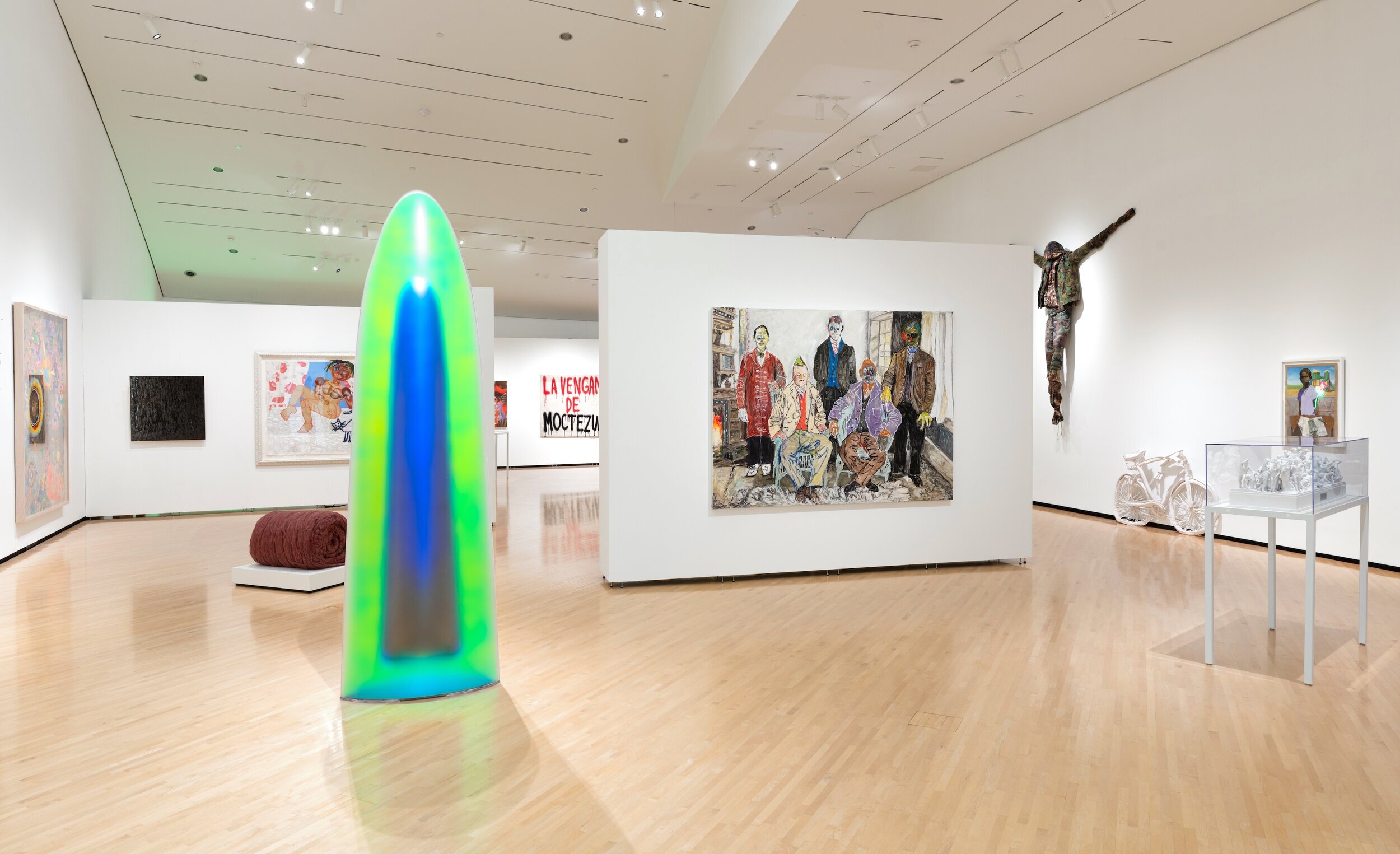




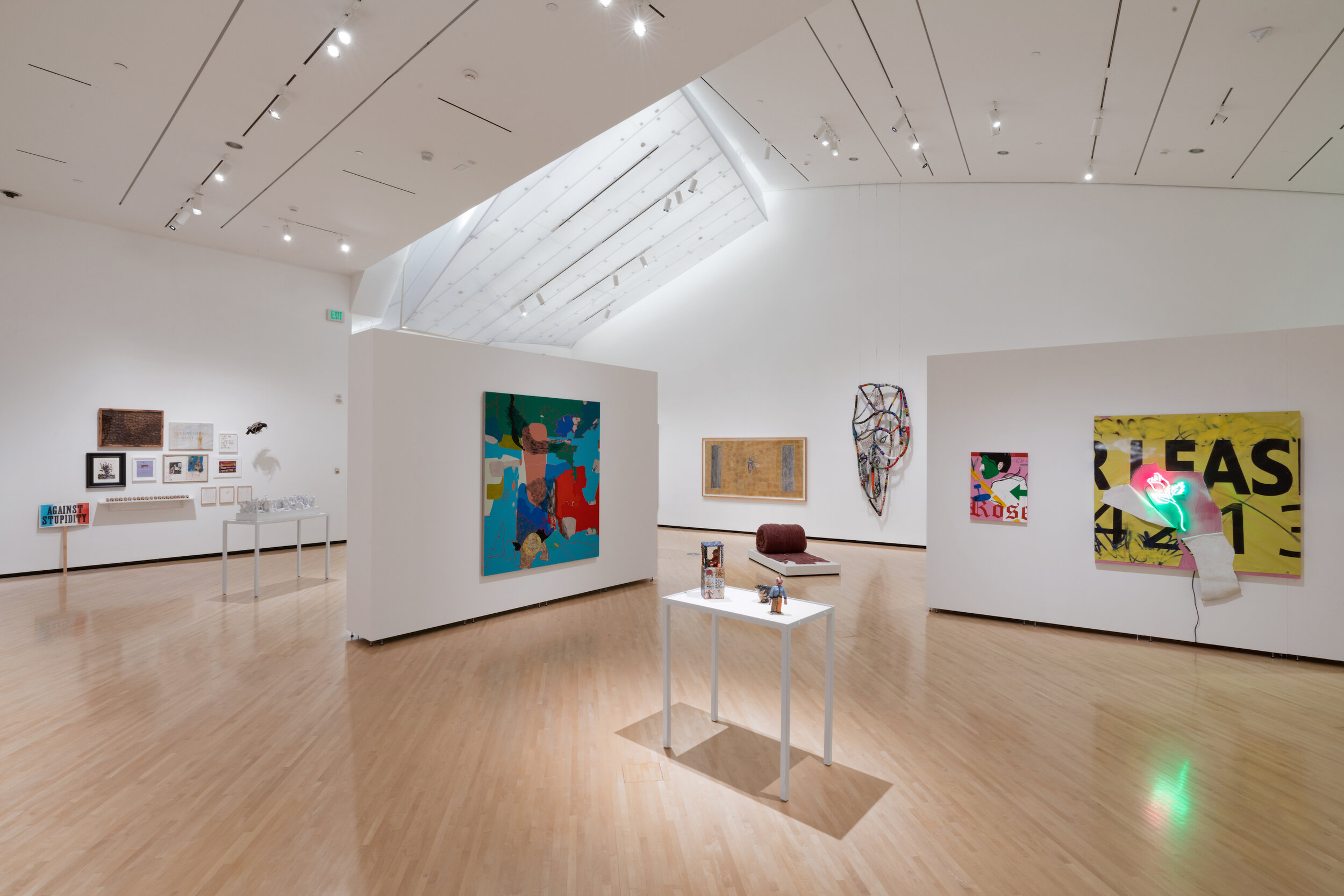
Voices of Unrest in the “American” Experience
-Amethyst Rey Beaver
A Very Anxious Feeling: Voices of Unrest in the American Experience shines light on the widespread feelings of apprehension in a selection of contemporary artworks from the Beth Rudin DeWoody Collection. The works in this exhibition reference both collective and personal anxieties and highlight the intersectional voices and experiences of Latinx and Latin American artists living or working in the United States. The use of the term “American” in the exhibition title, is fraught and intentional. Geographically, the Americas include North, Central, and South America, and all of the islands within the Western Hemisphere. And yet, the United States often claims the term “America” as its own. America—just like the people within it—is vast, and diverse, and complex, as is the “American” experience. While this exhibition focuses on artists in the U.S., the artists think expansively about “America” and identify broadly: Latino/a/x, Chicano/a/x, Hispanic, Afro-Latino/a, Caribbean, Mexican, Puerto Rican, Mexican-American, American, Indigenous, LGBTQ+, activist, artist, immigrant, mother, father. Identity is not static and these designations are always changing and negotiated. While there is no singular term that is universally agreed upon (“Latin American”, “Hispanic”, “Latino/a”, and “Latinx” all fail in multiple ways and none are free of colonial or racialized underpinnings[1]), the organizers of this exhibition have considered the term “Latinx” as a way to present an expansive, non-binary dialogue on the multiple and varied experiences Latinx encompasses, along with other self-identifications of the artist’s choosing. What brings these voices and visions together is that they have historically been left out of traditionally white spaces of art institutions.[2] At the present moment of cultural reckoning, a rise in populism, a failing economy, and a global health crisis, citizens are challenging institutions and systems that were built on and continue to reinforce inequity. A Very Anxious Feeling presents a plethora of voices, making visible the dissent, hope, joy, and transcendence of those who have witnessed America’s past, who inform America’s present, and who demand more of its future. From meditations on the multiple and complex experiences of migration by Eddie Rodolfo Aparicio, william cordova, Elmer Guevara, and Sandy Rodriguez, to present-day realities and dire predictions for the future of labor by Margarita Cabrera, Ramiro Gomez, and Sebastian Errazuriz, to interrogations of problematic tropes of art history and omissions of historical figures of color by William Villalongo, Clotilde Jiménez, and Firelei Báez, the artists in this exhibition chronicle emotions both universal and deeply personal. Anxiety runs deep.
Feelings of unrest are evident in the paintings of Farley Aguilar, Carlos Almaraz, and Luis Cruz Azaceta: ablaze in vibrant color, the scenes they depict contain both the promise and realization of intense violence. Other artists like Daniel Joseph Martinez and Carlos Rolón use protest symbols to evoke current and historical fights for equity and justice. Martinez’s sign, Against Stupidity, is both shockingly concise and fiercely expansive in its possible readings, giving viewers the power to actively engage and interpret the meaning. Rolón’s gold-leafed, afro hair pick, crowned with a Black Power fist has transformed a utilitarian tool into a beatific talisman of hope for the revolution. In other works, violence and unrest lie beneath the surface, unseen. Alina Perez's portrait of her uncle, Tío Robert, captures an intimate moment of grooming and vulnerability, an image that belies the sadness, trauma, and confusion that he wrought when he took his own life, and the life of another. For the artistic duo, assume vivid astro focus (avaf), their multicolored neon sculpture (and inspiration for the title of this exhibition), a very anxious feeling, illuminates their apprehension prior to the 2008 U.S. presidential election. Thirteen years after it was made, the anxious feeling remains.
The long and dark history of colonial capitalism and its continued economic oppression of Black, Indigenous, and people of color, is at the heart of works by Tania Bruguera, rafa esparza, Patrick Martinez, and Sayre Gomez, who use their work to question the validity of the economic system and the disparities it perpetuates. Tania Bruguera’s study for the installation Poetic Justice interrogates the historical and contemporary manifestations of British colonial power, calling attention to how Britain would export tea leaves from India, then process, rebrand, and re-sell the same tea within India as a product of British sophistication and class. rafa esparza’s hanging bird sculpture, Ojo, made from shredded and re-stitched Nike Cortez hi-top sneakers, serves as a warning pulled from the atrocities of the past: just as Spanish colonialism, led by Hernán Cortés, destroyed the Aztec Empire, the symbols and emblems of capitalism forebode a tragic end. Perhaps freedom from the effects of white supremacy and capitalism lies in Black self-determination: Patrick Martinez’s neon sculpture in black, red, and green (the colors of the Pan African flag), reads “Black Owned” illuminating the past and present struggle for Black economic liberation in the U.S. Sayre Gomez’s trompe l’oeil painting of a Carrara marble slab engraved with the words “Everything Must Go,” reads as a call to action, suggesting that the permanency, traditions, artifacts, and systems that have governed the past cannot lead us forward.
As the works of Margarita Cabrera and Ramiro Gomez intimate, iniquitous labor systems push people into vulnerable, obscure, or dangerous working conditions. Margarita Cabrera’s soft, vinyl fabric sculpture, Vacuum Cleaner is modeled on a factory product created just south of the U.S./Mexico border in Juárez. Soft, slightly drooping and sewn inside-out—the seams, threads, labor, and craftmanship are all visible—the sculpture, just like the people who created the original commodity, is exposed. Using the torn pages of luxury catalogues, cardboard, and images of sparklingly clean rooms and perfectly manicured landscapes, Ramiro Gomez inserts images of the people who make these scenes possible. In each work, the figures’ blurred features echo their blurred status; visible but invisible in a setting that both requires yet denies their existence and role in American society and domestic life. Sebastian Errazuriz’s The Useless Caste portends a bleaker prospect: the possibility that in the not-so-distant future, unprecedented technological growth will transform labor completely, replacing half of all jobs currently held by humans with machines. Comprised of nearly thirty scanned, modeled, and 3D printed historical sculptures, Errazuriz concentrates centuries of pain, suffering, and strife into a single image of this impending dystopian world.
For several artists in the exhibition, migration is a profound and life-altering experience that resonates in the work they create. Tanya Aguiñiga, who grew up commuting between Tijuana, Mexico and San Diego, California to attend school, uses the tension between living in two places “to operate between cultures and artistic disciplines.” Her biomorphic, hanging sculpture, Gynic Dispossession 2, suggests that the experiences of women who have survived trauma, or who have sacrificed their lives to cross into the U.S., have been deprived of their own bodies just as others have been deprived of land, property, or possessions. Huelemos Como Tu [We Smell Like You], Eddie Rodolfo Aparicio’s sculpture encapsulates the physical and psychic marks experienced and inherited through generations of injustice against humans and the planet. Using found clothing—symbols of the remnants of migration—Aparicio soaks the fabrics in rubber and pine sap and molds them around the marked and scarred tree trunks in Los Angeles, home to the largest Salvadoran diaspora. Both the trees and the clothing carry the marks and memories of lived experience, the visible scars on the trees imprinted into the soft textiles of human clothing. william cordova transforms his experiences of displacement and adaptation into treasure. In Memories of Underdevelopment, a Peruvian reed boat, stereo, and graffiti tagged car are suspended within a field of gold leaf, alluding to the process of turning experiences into cultural gold. The children depicted in both Elmer Guevara’s and Sandy Rodriguez’s portraits offer different stories of the promise of arriving stateside. Guevara’s self-portrait visually describes the adult-like role the artist took on as his parents’ translator, which involved making important family decisions, while Rodriguez’s delicately rendered portrait of Jakelin Amei Rosmery Caal Maquin, the seven-year-old child who died in the custody of U.S. Customs and Border Protection in 2019, contains the agony of this loss. “If there is a function for art, it is to prompt conversation and action,” Rodriguez said. “If you can do it while seducing people with material and beauty, then I think you have a better chance of motivating people.”
The exploration of untold histories is paramount in the works of Firelei Báez, Clotilde Jiménez, and William Villalongo. Both Villalongo and Jiménez, take on art history with all of its omissions and embodied injustices. Villalongo’s Nymph #6 combines two art historical tropes that are often considered unrelated—18th century nymph paintings and modernist abstraction. One reflects the desire for images of the nude female body, while the other reflects the Eurocentric and colonial mentality of consuming and appropriating non-western cultures for their own use, as seen in the works of artist’s like Picasso. Similarly, Clotilde Jiménez’s Olympia is a radical departure from Édouard Manet’s 19th-century painting of the same title and a reclamation of the Black body in space—particularly the queer, Black, male body. Firelei Báez’s portrait honors two under-celebrated women leaders from Caribbean history: Marie-Louise Coidavid, a Black queen in independent Haiti from 1811-1820, and Anacaona, Queen of the Taíno, a powerful chief who sought to build diplomatic relations with the Spanish in order to protect her people (1464-1504). Báez’s painting connects these women and countless other Black, Indigenous, women of color who, as the artist states, “fought for and created space for enacting black joy, resistance, and healing in spite of oppressive systems.”
For those who have been oppressed, marginalized, and exploited, manifestations of joy are an act of resistance. Leonardo Benzant’s colorful Black Joy Takes Courage is made up of beads and leather, fabric and string, suggesting accumulated and varied inherited experiences that people of African descent adopted as methods of survival. The large, nude, brown female figures dancing in Monica Kim Garza’s Reggaeton, dale—representations of herself in moments of happiness—visibly celebrate brown bodies. As critic Mala Muñoz writes, “In a capitalist society built on the backs of unpaid and underpaid women and girls of color, Garza’s paintings of brown skinned women at rest serve as powerful and poignant counter-narratives to the abuse that women of color have historically endured in the midst of colonization, global systemic racism, and patriarchy.” In her painting, Yellow Dog, Lilian Martinez recasts the familiar canine—a trope in art history that signifies loyalty and wealth—at the feet of a large, strong, and beautiful woman. For Martinez, placing women of color into scenes of luxury and visually occupying spaces associated with power from which they are often denied, is a powerful act of representation.
The desire to transcend from present-day pain and anxiety to a space of interconnection, compassion, and empathy is evident in the works of Gisela Colón, José Alvarez, Cecilia Vicuña, Candida Alvarez, and Raúl de Nieves. Candida Alvarez and Raúl de Nieves both consider the beauty of the transition between worlds: de Nieves’s sculpture, Psychopomp is a spiritual guide that leads souls into the afterlife while Alvarez’s abstract painting, A Wing, A Halo was inspired by a friend whose niece asked if she could see the “wings or halo” when her dog died. Similarly, Cecilia Vicuña’s works investigate the interconnectedness of the human experience across time, meditations on the liminal spaces between life and death, the past and present, the natural and the manmade. Gisela Colón’s towering, iridescent monolith transforms the phallic symbol into an object that addresses the universal relationship between humans and the earth, which as she says, transmutes the negative energy into positive energy. The power to transform the dark to light is the basis for Jose Alvarez’s The Promised Land. Created after the artist returned to his home in Florida after spending two difficult months in the Miami-Dade Krome Detention Center, the work offers a powerful visual antidote and hopeful counternarrative. “I really just want to inspire commonality, get closer to a state of consciousness,” Alvarez says. “Work that talks about this is important especially now when people feel a darkness has descended and need space to feel glorious, feel connected rather than isolated.”
[1] The term “Latin American” has been traced back to the writings of the French engineer and economist, Michel Chevalier (1806-1879) who used the term to differentiate “Latin” people from “Anglo-Saxons” in the Americas. The distinction was made despite the fact that during his lifetime, large portions of the U.S. were part of Mexico, and the term remains in use today despite the fact that the U.S. is the 5th largest Spanish speaking country in the world but is not defined as part of “Latin America”. “Hispanic” refers to persons, cultures or countries related to the Spanish language, Spanish Culture or Spanish people, and is commonly applied to countries once under colonial rule of the Spanish Empire. The term first appeared on the U.S. census in the 1970s and as G. Cristina Mora explains at length in her book, Making Hispanics: How Activists, Bureaucrats, and Media Constructed a New American, there were multiple and varied reasons for the creation and adoption of the term in the U.S. The term “Latino/a” is derived from the Spanish word, latinoamericano and thus originates from a colonial naming convention as well. “Latinx,” while non-binary, still retains the term “Latino” and many today reject the term because it is unintelligible in Spanish.
[2] As Arlene Dávila writes, “Latinx art has historically lacked institutional support, hence the growing consensus on the need to specify, define, and promote Latinx art as a space of scholarly, curatorial concern and as a market category.” Latinx Art: Artist, Markets, and Politics Durham and London: Duke University Press, 2020, Page 12.
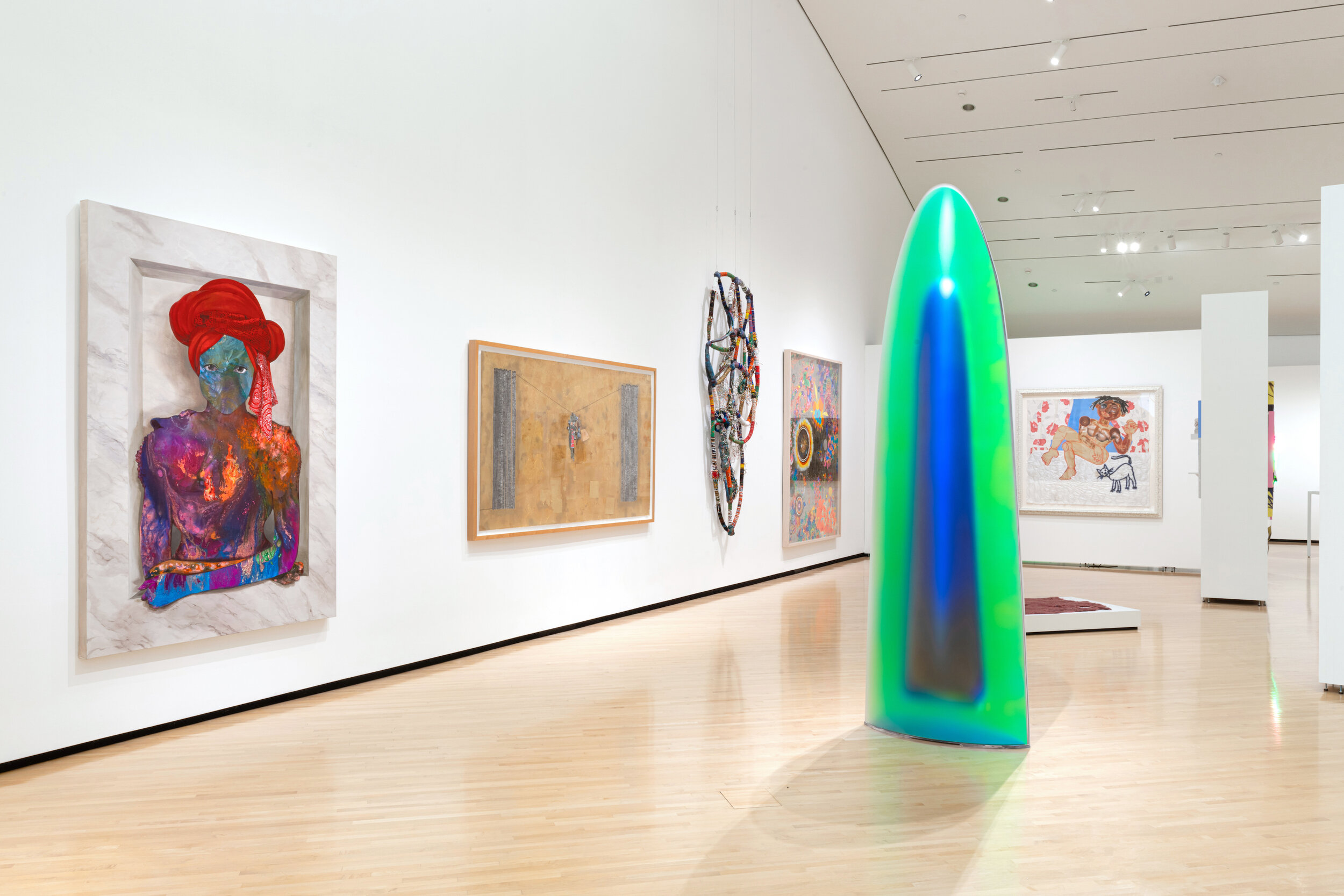





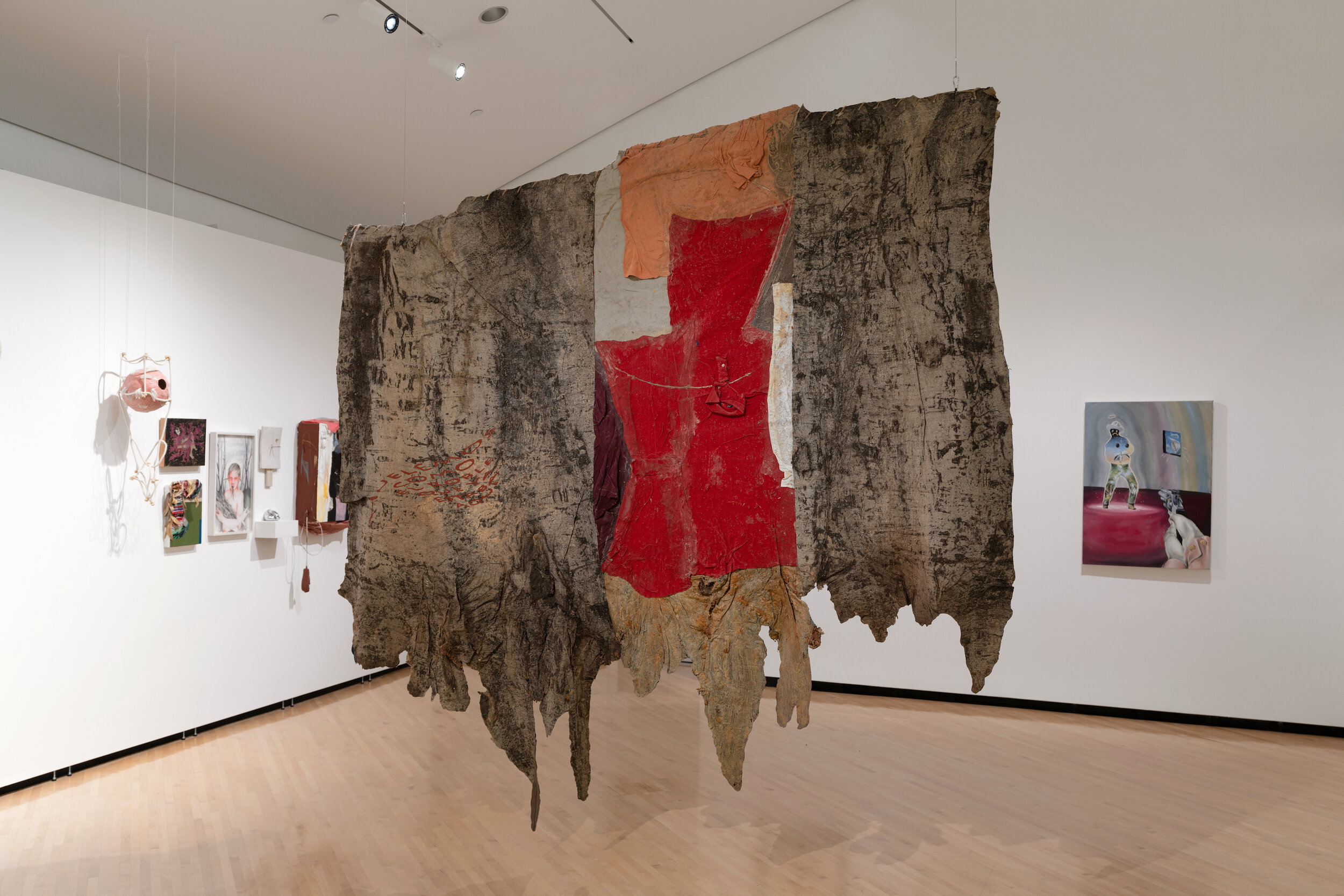
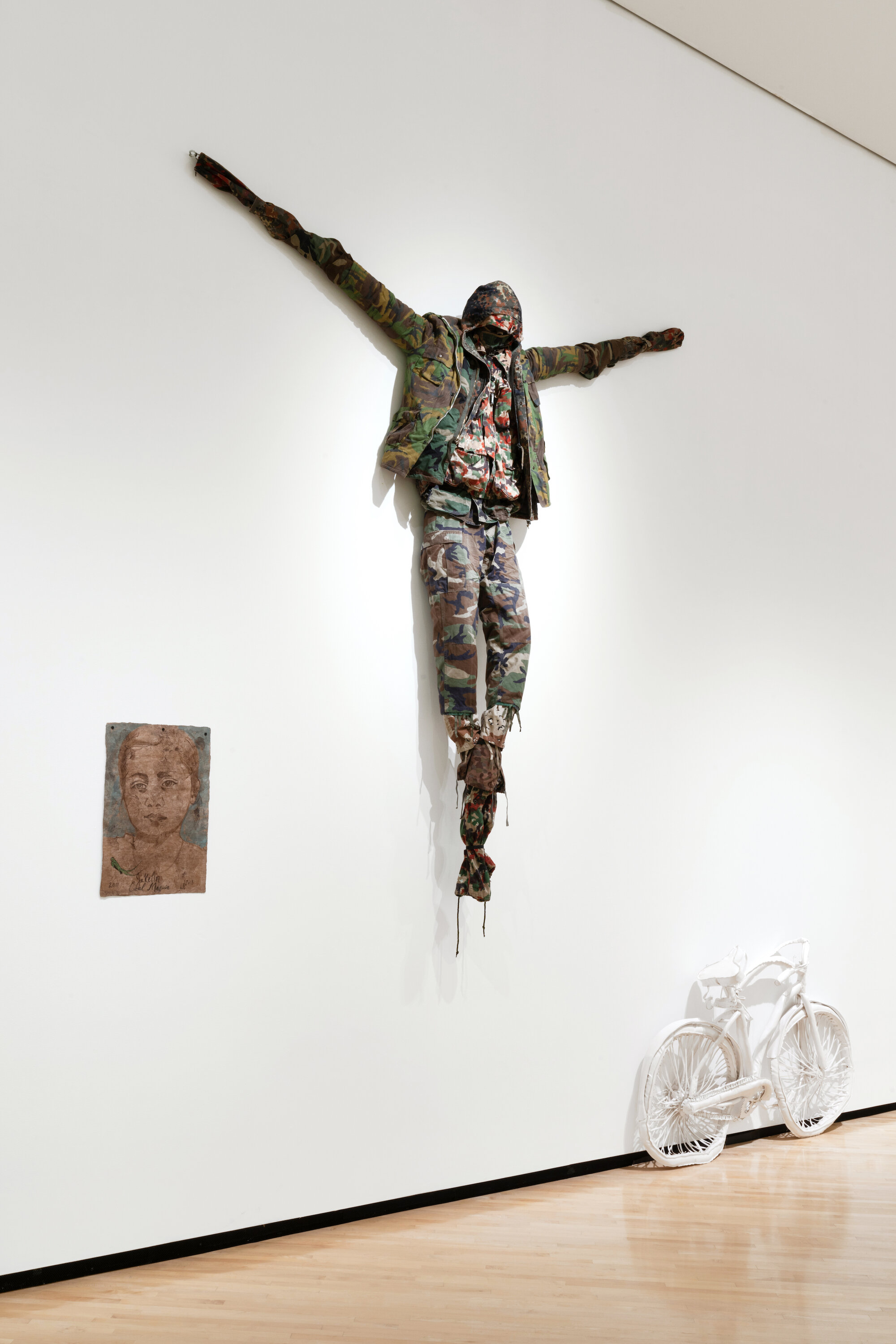

Links to Public Programs
-

Conversation with Gisela Colón
Virtual Conversation + Studio Tour with Artist Gisela Colón. Hosted by the Taubman Museum of Art, featuring Amethyst Rey Beaver, Co-Curator of A Very Anxious Feeling.
-

Conversation with Tanya Aguiñiga
Virtual Conversation + Studio Tour with Artist Tanya Aguiñiga. Hosted by the Taubman Museum of Art, featuring Amethyst Rey Beaver, Co-Curator of A Very Anxious Feeling.
-

A Very Anxious Feeling: Virtual Guided Tour with the Curators
A Guided Virtual Tour of the Taubman Exhibition, A Very Anxious Feeling by the exhibition curators and collaborators.